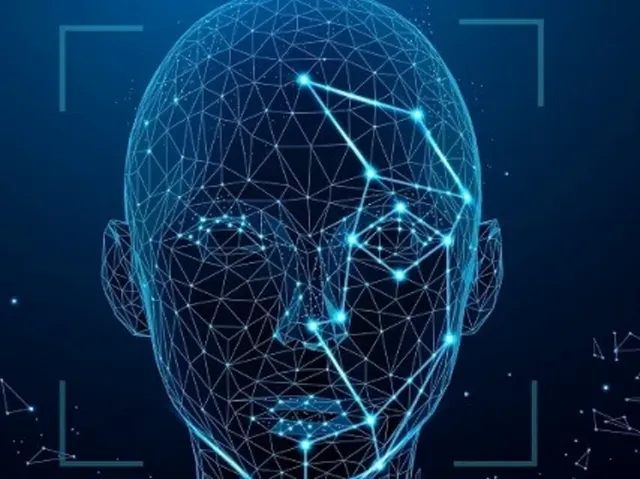In recent years, the adoption of advanced technologies in everyday operations has revolutionized traditional processes across various sectors. One such innovation is the Face Recognition-Based Attendance Monitoring System, which leverages cutting-edge image processing and machine learning techniques to automate attendance tracking. This system has proven to be an effective solution in settings such as schools, colleges, and workplaces where manual attendance methods are still commonplace. By employing facial recognition technology, this system eliminates the inefficiencies associated with traditional processes, increasing the speed and accuracy of attendance management.
More details: https://bit.ly/4eBB63Q
At the core of this system lies the ability to process real-time video feeds, capturing and analyzing the unique features of individuals' faces. The system then matches these facial features against a stored database of enrolled users, automatically logging attendance without the need for manual input. This seamless, contactless method reduces the time taken for attendance and minimizes errors typically associated with manual entry. The primary technologies that enable the smooth functioning of this system include Python libraries like OpenCV, Dlib, and face_recognition. These libraries are equipped with robust tools for image processing, face detection, and recognition tasks, which allow developers to build reliable and highly efficient solutions.
Database Integration and User-Friendly Interfaces
A critical component of any attendance system is its ability to store and retrieve records efficiently. The Face Recognition-Based Attendance Monitoring System is designed to maintain a database that securely stores attendance records over time. This data can then be easily accessed and analyzed, offering key insights into attendance patterns and trends. For educational institutions, this feature can help track students' participation and identify irregularities, while in corporate environments, it assists in monitoring employee punctuality and presence.
More: https://bit.ly/4eBB63Q
Another standout feature of the system is its user-friendly graphical interface, which allows HR personnel, teachers, or administrators to manage attendance with minimal technical know-how. The interface is designed for easy navigation, enabling users to quickly view attendance reports, export data, and manage user profiles. Customization options further extend the system’s functionality by allowing notifications for absences or late arrivals, as well as integration with existing enterprise management software. This makes the system adaptable to various organizational needs, whether it be a small classroom environment or a large-scale corporate office.
Enhancing Security and Reducing Fraud
One of the most significant advantages of incorporating face recognition technology into attendance management is the enhanced security it offers. Traditional methods, such as signing an attendance sheet or using ID cards, are prone to abuse, such as proxy attendance (when someone marks attendance on behalf of another person). Face recognition technology addresses this problem by ensuring that only authorized individuals can mark their attendance. Since facial features are unique to each person, the chances of fraud or impersonation are significantly reduced, providing a higher level of security.
The system can also be integrated with other security measures, such as biometric authentication or access control systems, to create a more comprehensive security framework. For example, it can be configured to trigger alarms or notifications if an unauthorized person attempts to enter a restricted area or mark attendance. This level of security is particularly beneficial in environments where sensitive data is handled or where access control is of paramount importance.
Scalability and Adaptability
A key advantage of the Face Recognition-Based Attendance Monitoring System is its scalability. The system can be implemented in environments ranging from small classrooms to large corporate offices or industrial sites. Its flexibility allows it to adapt to various organizational structures, making it suitable for educational institutions, government offices, healthcare facilities, and private enterprises. Moreover, the system can handle a growing number of users without compromising its performance, ensuring that as the organization expands, the attendance monitoring system remains efficient.
The ability to scale also extends to the hardware requirements. While the system can be implemented using basic off-the-shelf hardware such as webcams and standard computing devices, it can also be enhanced with more sophisticated hardware to increase its efficiency in larger environments. For example, high-definition cameras and more powerful servers can be used to handle large volumes of data, ensuring quick recognition and processing times even in highly populated environments.
Data-Driven Decision Making
In today’s data-driven world, the ability to generate actionable insights from attendance data is invaluable. A Face Recognition-Based Attendance Monitoring System not only simplifies the process of recording attendance but also allows organizations to harness this data for decision-making. For example, educational institutions can identify patterns of absenteeism and take timely action to address student engagement issues. Similarly, businesses can use attendance data to monitor employee productivity and implement strategies to improve workforce management.
More: https://bit.ly/4eBB63Q
By automating attendance monitoring and generating comprehensive reports, the system provides a foundation for better resource allocation, time management, and operational efficiency. The insights derived from attendance data can help administrators optimize scheduling, improve workflow, and ultimately increase productivity. Furthermore, by integrating attendance data with payroll systems, organizations can streamline salary processing, reducing the administrative burden on HR departments.
Conclusion
The Face Recognition-Based Attendance Monitoring System represents a significant leap forward in how attendance is tracked and managed. By harnessing advanced image processing and machine learning techniques, the system offers a more efficient, secure, and scalable solution than traditional attendance methods. Its ability to handle real-time video feeds, analyze facial features, and store attendance data in a user-friendly interface makes it a valuable tool across various sectors.
With the added benefits of enhanced security, fraud prevention, and data-driven insights, this system not only simplifies attendance management but also provides a platform for improving organizational efficiency and productivity. As technology continues to evolve, we can expect even greater advancements in how attendance systems are deployed, integrated, and utilized, shaping the future of workplace and educational management.
Click: https://bit.ly/4eBB63Q
